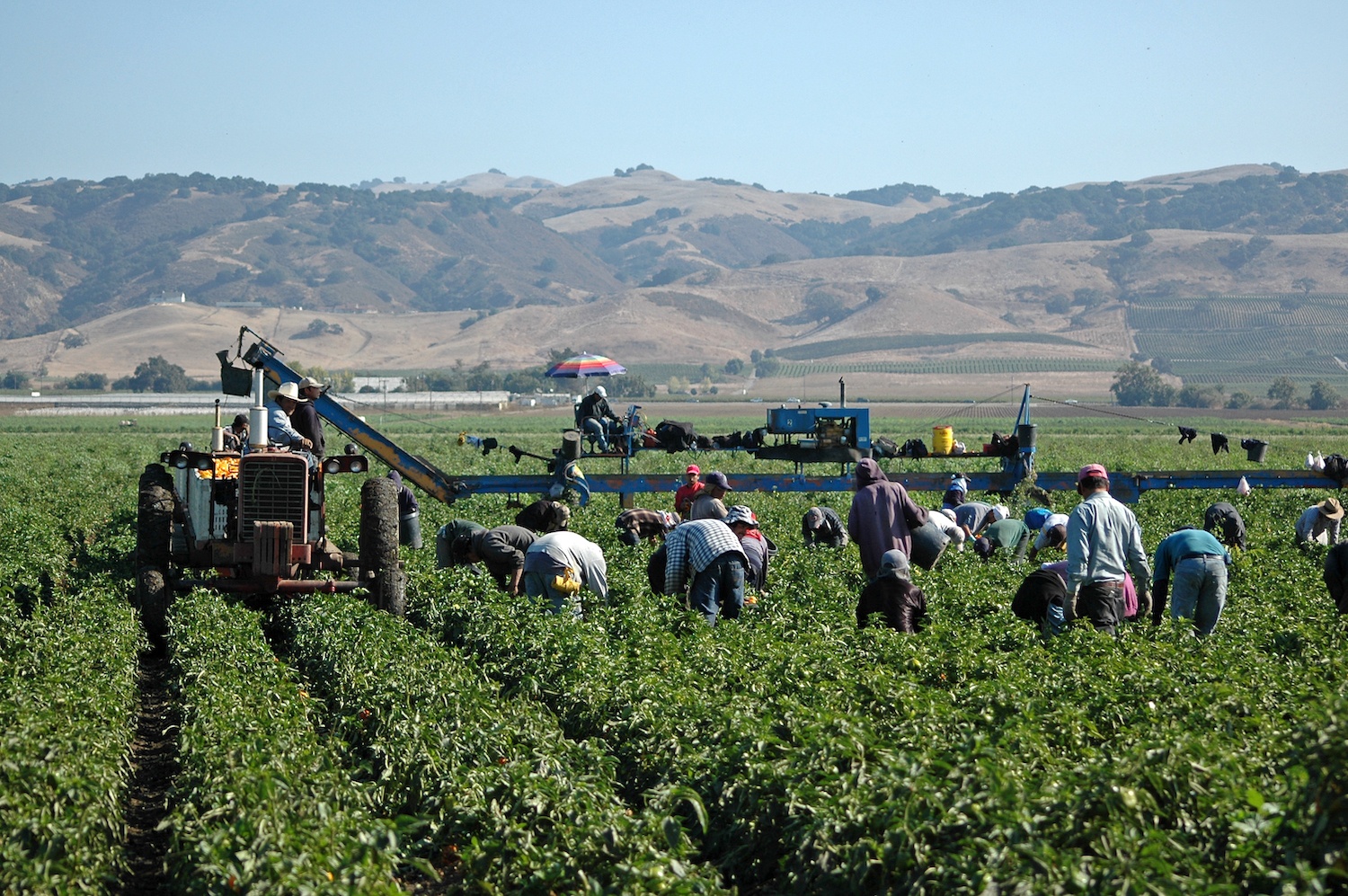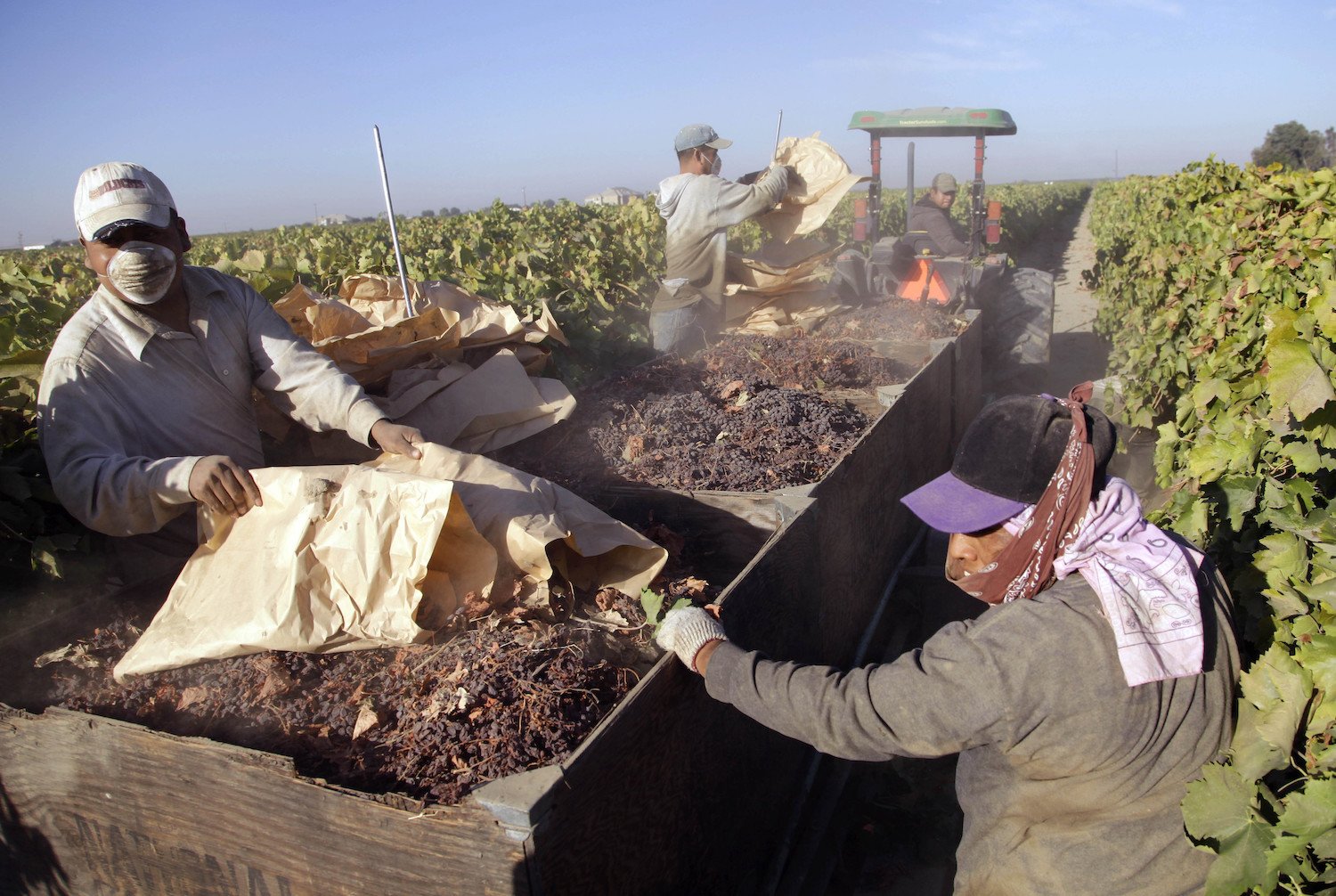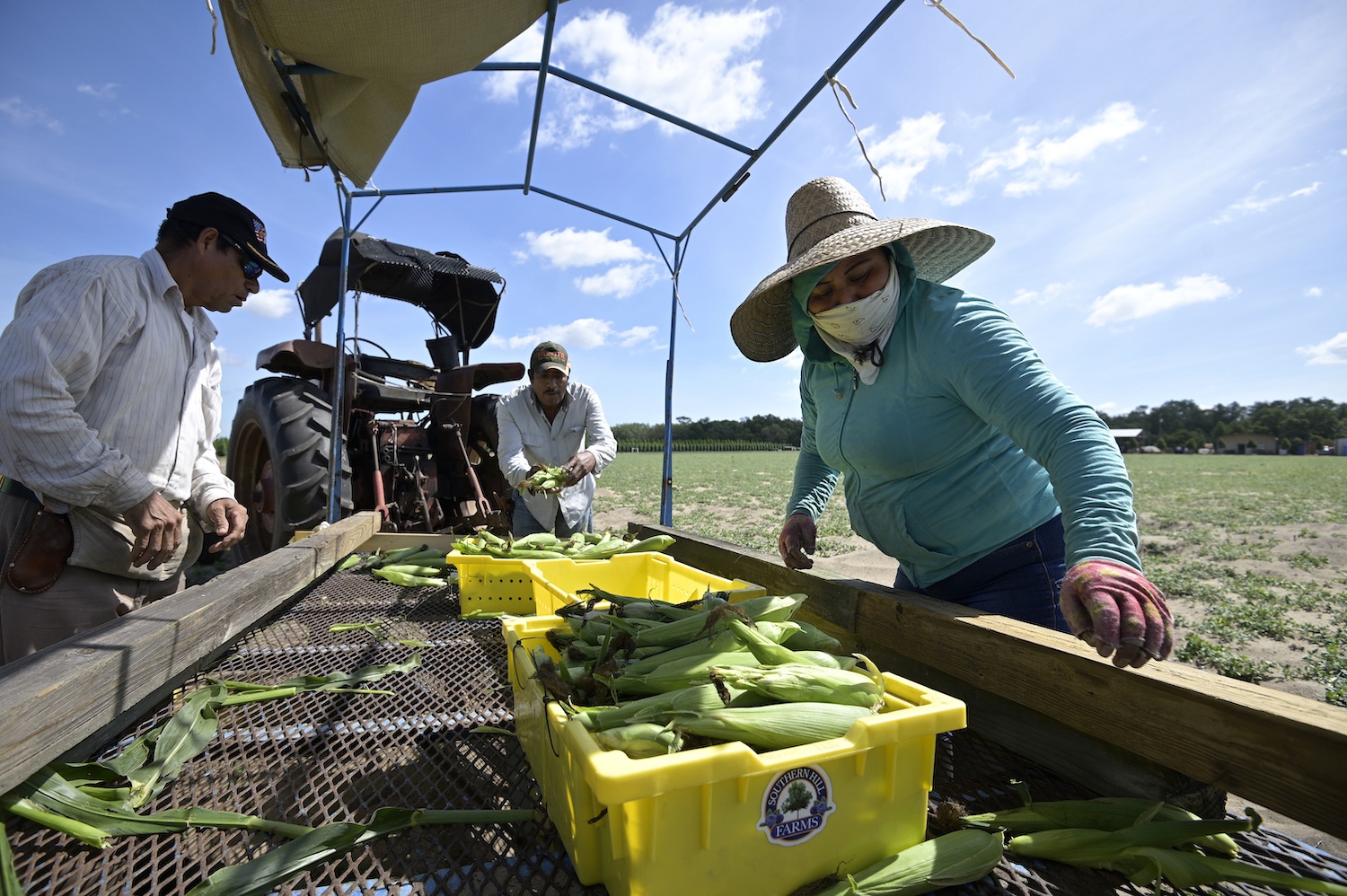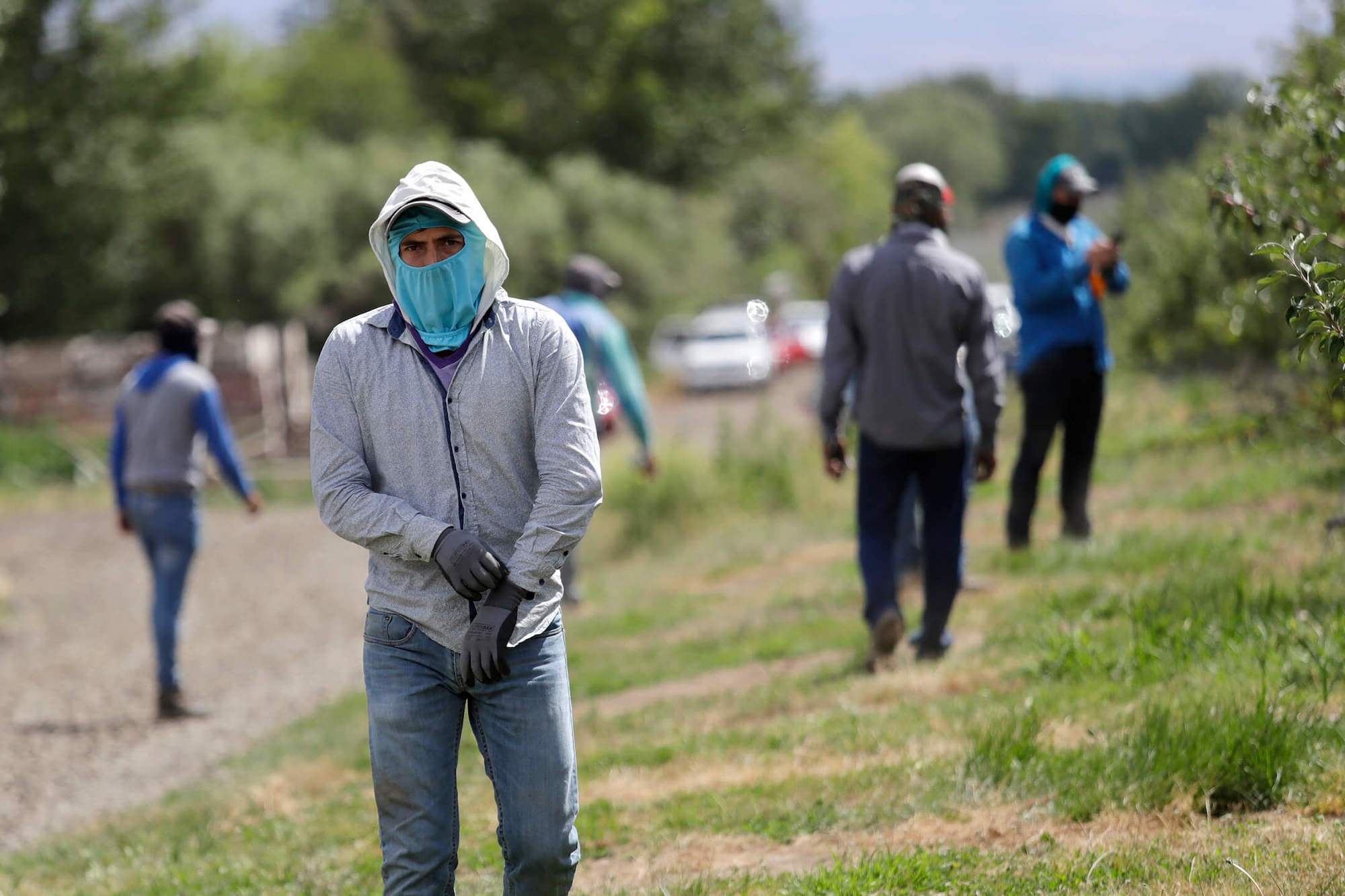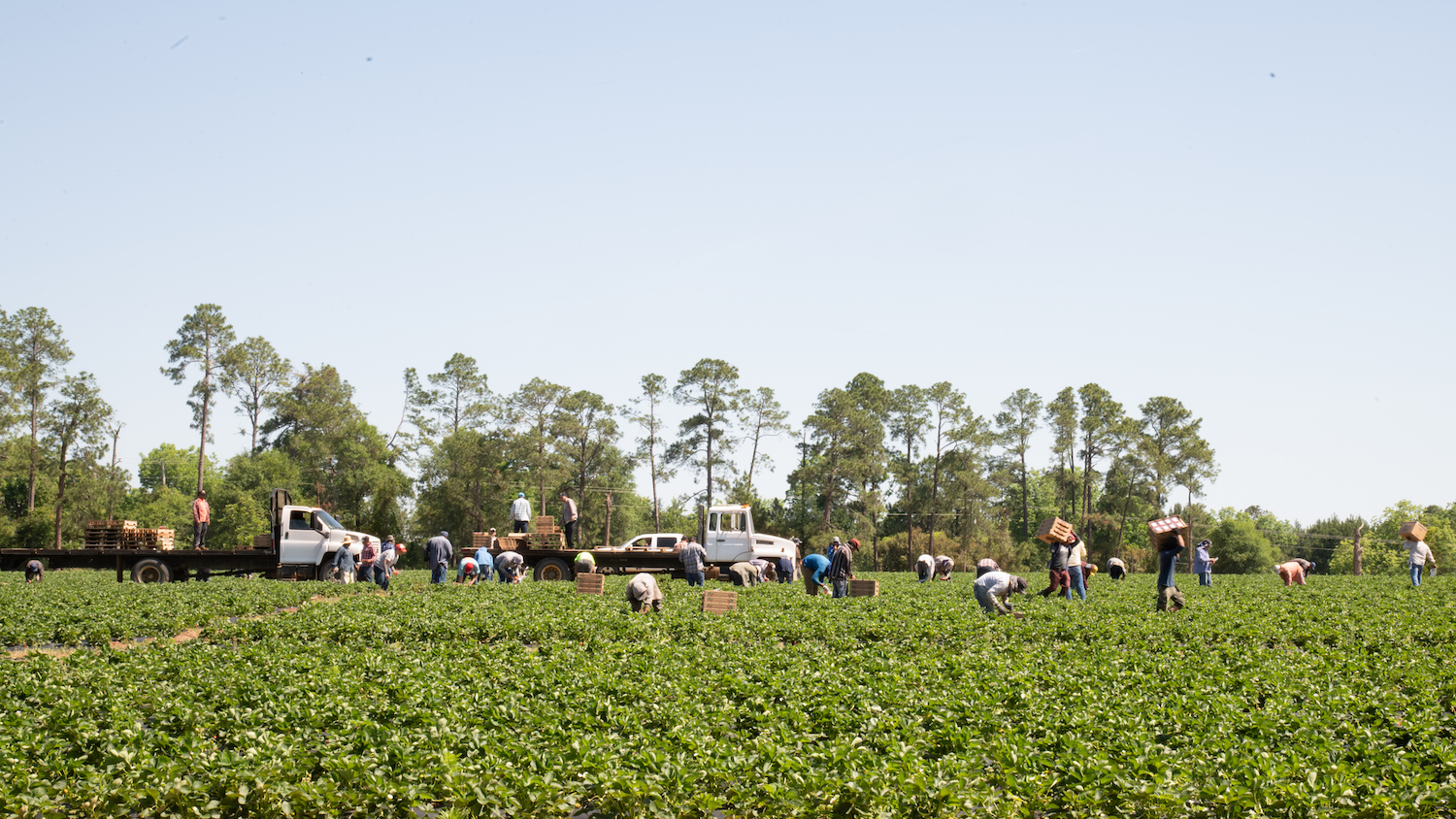Worker advocates are calling the decision by the Department of Labor “unconscionable and utterly devoid of a valid justification.”
While the results of the 2020 election remained up in the air through most of last week, the current administration continued to plow ahead on a longtime promise to lower the minimum wage for seasonal farm workers. On Thursday, with little fanfare, the Department of Labor (DOL) published a final rule that will transfer approximately $170 million in projected wages per year from workers to employers, according to the agency’s own analysis.
From 2021 through 2022, DOL will freeze minimum wages for over 200,000 seasonal farmworkers participating in the H-2A visa program at current levels, which were set at the end of 2019. Starting in 2023, it will then peg future wage increases to the Bureau of Labor Statistics’ employment cost index, which DOL says will raise wages at a lower rate than under current methodology. Previously, the agency adjusted these rates every year to reflect pay fluctuations in the farm labor market. Experts believe that this new move will effectively result in a pay decrease.
“This is absolutely a wage cut for migrants who are H-2A farmworkers,” said Daniel Costa, director of immigration law and policy research at the Economic Policy Institute. “H-2A farmworkers will not benefit from any natural wage growth that occurs for three years—during what farm owners are saying is a severe labor shortage, which is exactly when you would expect wages to grow in a free market.”
“H-2A farmworkers will not benefit from any natural wage growth that occurs for three years—during what farm owners are saying is a severe labor shortage, which is exactly when you would expect wages to grow in a free market.”
But don’t just take Costa’s word for it. The DOL itself estimated that the rule would indeed result in the shift of $1.68 billion in earnings from workers to farmers over a decade. “In total, there is a transfer from employees to employers,” the final rule reads.
Bruce Goldstsein, president of legal advocacy group Farmworker Justice, called the move “unconscionable and utterly devoid of a valid justification.”
“Farmworkers are among the lowest-paid workers in the nation, generally earning poverty-level wages, but this policy will stop the modest progress that many farmworkers have experienced recently,” he wrote in a press release.
With DOL’s new rule, the agency will no longer rely on the farm labor survey to set H-2A wages at all.
Farm employers, on the other hand, who have long called for a “stabilization” of H-2A wage rates, welcomed the development.
This rule follows another recent Trump administration move that would have effectively lowered farmworker earnings. Last month, the Department of Agriculture announced that it would axe its upcoming farm labor survey—the findings of which DOL previously relied on to set H-2A minimum wages. After labor advocates sued, a federal judge last week blocked the agency’s maneuver. It appears that the victory may be short-lived, however. With DOL’s new rule, the agency will no longer rely on the farm labor survey to set H-2A wages at all.
[Subscribe to our 2x-weekly newsletter and never miss a story.]
When asked if Farmworker Justice might take the DOL’s rule to court, Goldstein said the organization was “exploring options.” And while a Biden presidency could roll the rule back at some point in the future, doing so would mean undergoing the standard rulemaking process, which would take quite some time.
With the DOL’s final rule set to take effect on December 21, it’s unclear how the agency under Trump is making good on its stated mission to “foster, promote, and develop the welfare of the wage earners.”
Sam Bloch contributed reporting.
